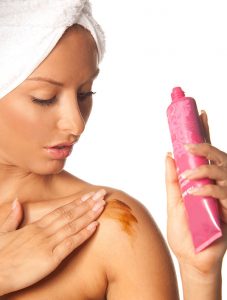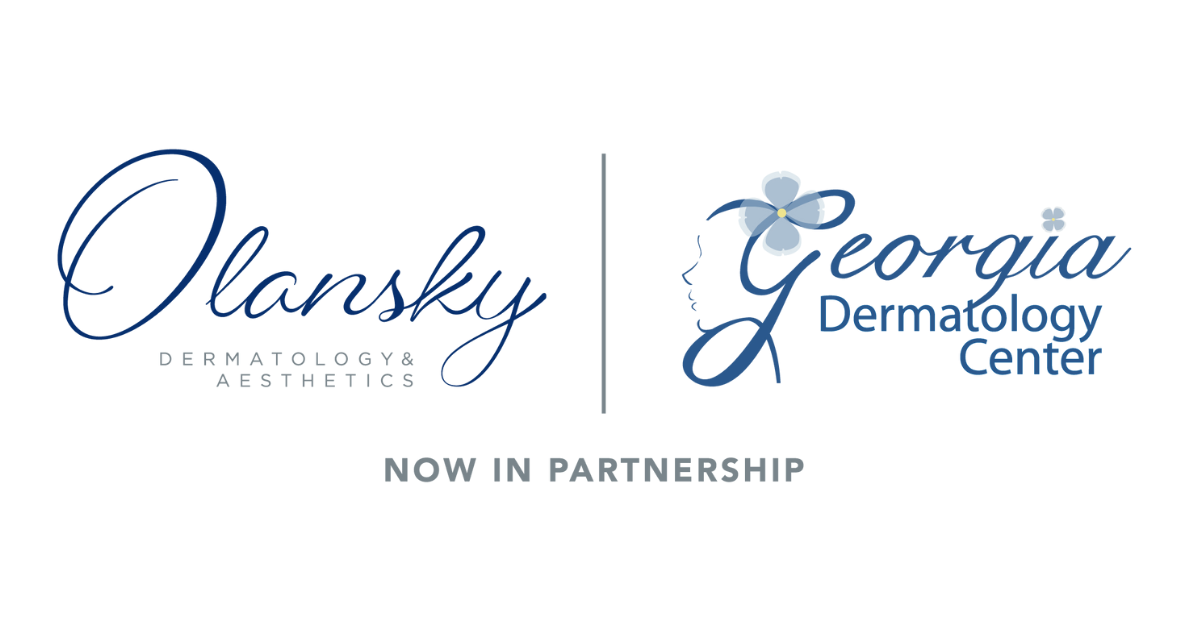Is Fake Tan Safe?
 Is fake tan safe? This is the type of sunless tanning that goes on as a spray tan or lotion. Are these good alternatives for getting the golden tan you want and desire?
Is fake tan safe? This is the type of sunless tanning that goes on as a spray tan or lotion. Are these good alternatives for getting the golden tan you want and desire?
By now you should know that lying out in the sun or using a tanning bed is a huge no-no! Each have huge consequences when it comes to putting your body at greater risk for skin damage and skin cancer.
What is in Those Self Tanners & Sprays?
The active ingredient in all tanning products is dihydroxyacetone. Also known as DHA, this is a simple carbohydrate that can be derived either chemically or from natural sources such as beets and cane sugar.
When you apply a product containing DHA, it reacts with the amino acids in the top layer of your skin. This generates pigments called melanoidins, which appear brown because they absorb certain wavelengths of light.
This process is known as the “Maillard reaction.” It starts within two to four hours after applying self-tanner, and continues for up to 72 hours.
During this time, it will emit that distinctive self-tanner smell, because of the chemical reaction taking place. (ALL DHA products produce it; brands just add different fragrances to try to mask it.)
Your resulting tan can last up 10 days, but will start to fade within three to seven days as you naturally shed dead skin cells.
Are Self -Tanners Safe?
As you may have guessed, the problem with self-tanners is the DHA.
That Maillard reaction I mentioned, that takes place when you apply DHA to your skin? It’s the same thing that occurs when you caramelize sugar or grill meat. So even though you’re avoiding the sun, you’re STILL roasting your skin!
Self-Tanners & Potential Aging Effects
Self-tanning agents work by producing an artificial “tanning” process from the reaction between the proteins on the surface of skin and the reducing sugars (such as dihydroxyacetone (DHA)) of the self-tanner. DHA has been known for a while to be a color additive, but it was only until recently that DHA formulations can act gradually and emulate a natural bronze-y tan without appearing too orange on most skin tones. Their sweeping popularity is a testament to them being the obvious “no-brainer” choice for a substitute “tan” when it is now commonly known that real tans achieved by UVB and UVA exposure lead to skin wrinkling, sagging, and discoloration.
Studies have shown that, after application of tanning lotions, the skin’s sensitivity to ultraviolet light increases slightly. A 2007 study found that, for 24 hours after a lotion was applied, the amount of UV-induced free radicals produced was 180% higher than untreated skin. Some tanning lotions contain sunscreen to help guard against this, but proper sunscreen should still be applied when using tanning lotions.
You might think that, once a tan from tanning lotions has developed, this will afford your skin some natural protection from the sun’s rays. However, normal tanning is a result of the production of melanin in the skin; the melanoidins produced by tanning lotions do not afford the same protection. It’s estimated that a fake tan only affords an SPF of 3 – much too low to offer significant protection against the sun’s rays, so you need to make sure you still slap on the sunscreen!
Is Fake Tan Safe?
So, should you use these sunless tanning products? There doesn’t seem to be too much risk to using tanning lotions, as long as you remember that the tan they generate won’t really offer you any protection from the sun’s rays. With the evidence of increased UV sensitivity, they should definitely be used in combination with sunscreen!












